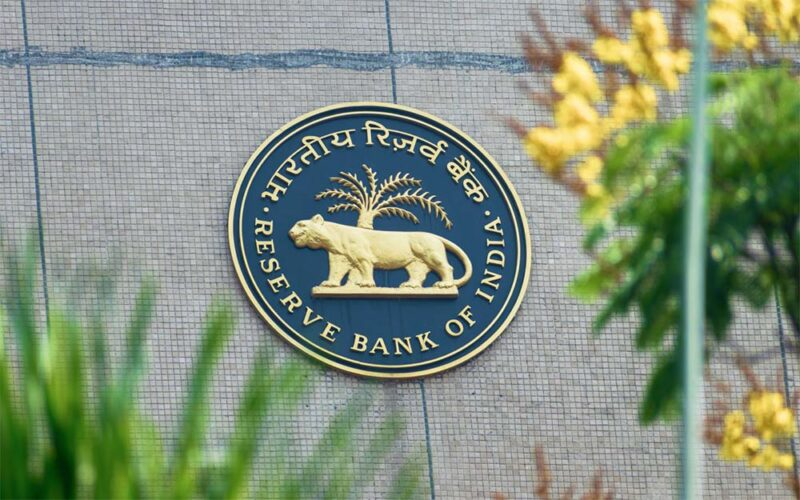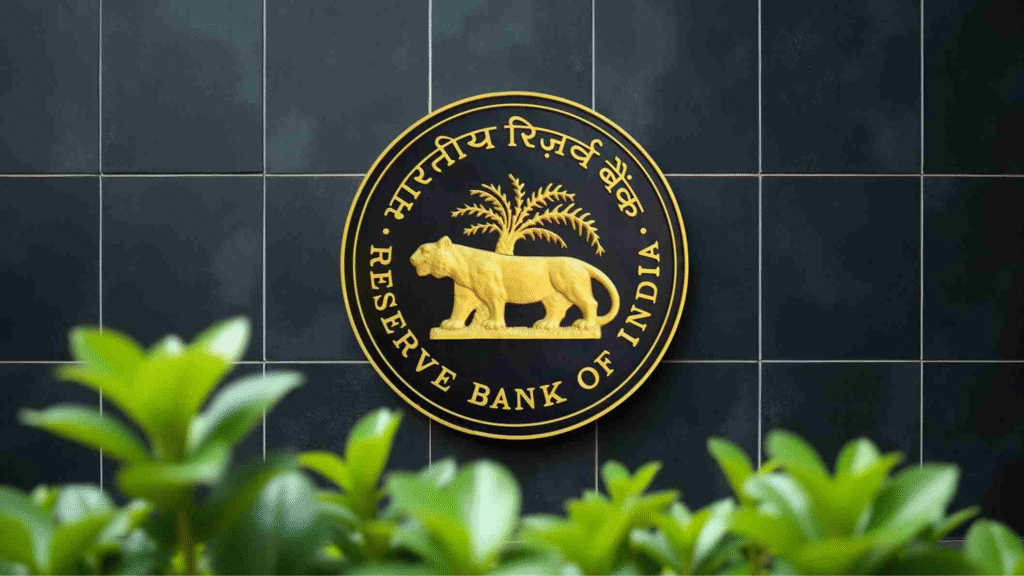Indian markets stumble as RBI holds repo rate at 5.5% and retains neutral stance, dampening hopes of dovish policy. Deep dive into transmission, market impact, and what lies ahead.

Ever felt hopeful about interest rates falling, only to have the central bank surprise you by hitting the brakes? That’s exactly what happened when the RBI held the repo rate at 5.5% and retained its neutral policy stance on August 6, 2025. That move sparked a subtle but collective sigh among investors—especially those holding rate‑sensitive sectors like real estate, autos, and consumer goods.
Why did markets tumble when many had hoped for accommodative policy during rising trade tensions? Let’s unpack what the RBI said, how markets reacted, and what it all means for your portfolio.
📉 What Happened: RBI’s Decision and Market Reaction
On August 6, 2025, the RBI’s Monetary Policy Committee (MPC) unanimously kept the repo rate unchanged at 5.50%, maintaining a neutral stance despite inflation dipping to just 2.1% in June—a six‑year low Moneycontrol+1Moneycontrol+5Financial Express+5The Economic Times+5Yahoo Finance+7Fortune India+7The Economic Times+7Reuters+3Financial Times+3The Times of India+3Financial Times+4Reuters+4Reuters+4. The move followed a 50-basis-point rate cut in June, part of a total 100 bps reduction in 2025 Financial Express+3Reuters+3Reuters+3.
Markets had expected a dovish tone. Instead, RBI Governor Sanjay Malhotra described the outlook as “bright” but flagged risks including escalating U.S. tariffs on Indian exports and a weakening rupee, narrowing global rate differentials and limiting the scope for further cuts The Times of India+5Reuters+5Reuters+5.
Equity indices quickly responded:
- Nifty 50 dropped by 0.3–0.4% to ~24,551
- Sensex lost 0.2–0.3% to ~80,466 FXStreet+14Business Today+14Yahoo Finance+14Reuters+1
- All 16 sectors declined, with small- and mid-caps slipping about 1.2–1.4%, reflecting their sensitivity to domestic rates and borrowing access Reuters+1
🏦 Sector Drags
- Realty Index plunged ~2.4%
- Consumer and Auto indices fell ~0.9% each
- Financials gave back early gains to close ~0.3% lower Reuters
Among individual stocks:
- Britannia dropped ~2% after dismal quarterly earnings
- Bharti Airtel rose ~1% on strong subscriber growth and better margins
- Its subsidiary Bharti Hexacom slumped ~2.5% on weaker profits Reuters+1
📌 Key Takeaway
The RBI paused rates at 5.5% and stuck with a neutral tone, spooking investors expecting a dovish pivot. Rate-sensitive sectors led the decline, and market sentiment turned cautious.
🧠 Why RBI Played Cautious: Inside the Neutral Stance
What “Neutral” Means
Neutral policy doesn’t signal easing—but doesn’t point to tightening either. It’s a middle path, holding all options open: monitoring inflation, growth, and global risks before moving again Reuters+1business-standard.com+1. It gives the RBI maximum flexibility.
Why This Move Makes Sense
1. Global Trade Uncertainty & U.S. Tariffs
US-imposed 25% tariffs on several Indian export categories are due imminently. Combined with concerns over India’s oil imports from Russia, the RBI sees reduced headroom for aggressive rate cuts business-standard.com+15Reuters+15ThePrint+15.
2. Weak Rupee and Tightening Yield Differential
With the rupee weakening and global interest rate spreads narrowing, further easing could derail currency stability and discourage foreign investment Reuters.
3. Inflation Outlook
Although CPI inflation is at a six-year low (2.1%), the RBI anticipates a rebound later in the fiscal year and has revised its inflation forecast downward (from 3.7% to 3.1%) Reuters+1.
4. Transmission Lag From Previous Cuts
The impact of June’s 50 bps cut is still filtering through credit markets and the broader economy. Cutting rates again too soon could lead to overstimulation or unintended liquidity risks Financial Express.
🧠 Expert Voices
- Umesh Kumar Mehta (SAMCO Mutual Fund) noted a weakening rupee and shrinking global rate differential meant little scope for further cuts Reuters.
- Upasna Bhardwaj (Kotak Mahindra’s Chief Economist) said the pause was expected and that the RBI’s future decisions will remain data-driven, anticipating modest easing possibly from December 2025 onward Hindustan Times.
💡 Section Summary
Neutral stance offers RBI breathing room. With trade shocks, currency swings, and disinflation still incomplete, holding rates lets data—not speculation—guide the next move.
📊 How Different Investor Segments Felt the Jolt

Rate‑Sensitive Stocks: Realty, Autos, Consumer
These sectors rely heavily on borrowing. With no sign of rate relief:
- Realty fell sharply (~2.4%), taking top names like Phoenix Mills, Godrej Properties, DLF, and Brigade down with it Fortune India.
- Auto and Consumer indices also retraced ~0.9% each. Investors in home loans, car EMIs, and consumer financing began revaluing growth exposure.
Financials & Banking
Banks initially popped on hopes of liquidity-friendly policy, but reversed mid-session:
- Nifty Bank lost ~0.5% from intraday highs
- PSU banks like IndusInd Bank (–2.7%), AU Small Finance Bank (–2.5%), IDFC First Bank, and Canara Bank closed in the red Reuters+1.
Small‑ & Mid‑Caps
These segments fell around ~1.2–1.4%, reflecting their domestic exposure and sensitivity to financing conditions Reuters+1.
Major Laggards Listed
| Stock | Movement |
| Britannia | −2% |
| Bharti Airtel | +1% |
| Bharti Hexacom | −2.5% |
🧠 Key Takeaway
Growth-intensive sectors dependent on credit felt most exposed. Banks, consumer, and realty names fell hard, while earnings-driven pockets like Bharti Airtel offered some resilience.
🛠️ Investor Playbook: What to Do Now
1. Brace for a Delay
With the RBI keeping rates steady, fresh rate cuts may be postponed to Dec 2025 or later, depending on inflation trends and global shock absorption.
2. Favor Strong Fundamentals
Stocks like Bharti Airtel that posted solid earnings and still rose amidst sector declines show the path: focus on quality companies with pricing power and domestic resilience.
3. Hedge Currency Risk
A weak rupee may impact import costs and inflation expectations. For export-heavy portfolios, watch forex and consider partial hedging strategies.
4. Monitor Liquidity Signals
The RBI might use tools like VRRRs and open market operations to manage rupee and liquidity flows—these often precede policy shifts rbi.org.inReuters.
5. Diversify Globally
As U.S. rate outlooks shift and global tariffs rise, having exposure to non-India equities or bonds insulates your portfolio from concentrated domestic risk.
✅ Strategy Summary
Stick with fundamentally strong, well‑priced businesses; manage rupee exposure; and stay alert to RBI liquidity measures as leading indicators of future loosening.
🔄 RBI vs. Global Central Banks: Is This Caution Unique?
India’s neutral pivot isn’t unusual—but the global backdrop is sharper.
- Many central banks (e.g., U.S., EU) are still debating whether to cut rates, weighed down by inflation uncertainty.
- The RBI’s revised inflation forecast of ~3.1% remains comfortably within its target band, allowing some leeway for rate easing later ReutersThe Times of India.
- RBI’s dovish tone contrasts with its earlier accommodative stance that prevailed through much of 2024 and early 2025, when rates were slashed multiple times business-standard.com.
Still, Governor Malhotra repeated that growth prospects are intact and the policy framework is flexible—but “frontloaded easing” suggests limited runway for repeated cuts rbi.org.inReuters.
✍️ Final Thoughts
The RBI’s pause—even at a record low inflation zone—spooked the markets because investor hopes were pinned on further rate relief. By staying neutral at 5.5%, RBI signaled caution, not complacency. It’s a reminder: central banks walk a fine line between supporting growth and preserving stability.From an investor’s lens: rate-sensitive plays may stay volatile, while quality domestic earners may shine. Keep liquidity tools and rupee action on your radar—they’ll likely signal when the next turn comes.
🏁 Call to Action
What’s your view? Will RBI lean dovish by year‑end, or remain cautious? Share your thinking: what sectors are you watching, and how are you positioning for evolving rate and currency dynamics?

What does a “neutral” stance mean?
It implies flexibility—no bias toward rate hikes or cuts until new data arrives.
How to protect portfolios against currency and rate risks?
Diversify, favor strong domestic names, and hedge forex exposures where needed.
Why did RBI hold rates even when inflation is low?
To monitor the lag from earlier cuts and avoid overheating currency or markets.
Will RBI cut rates again in 2025?
Eyes are on December 2025—but any cut will depend on inflation, growth, and global risks.
Will RBI cut rates again in 2025?
Eyes are on December 2025—but any cut will depend on inflation, growth, and global risks.